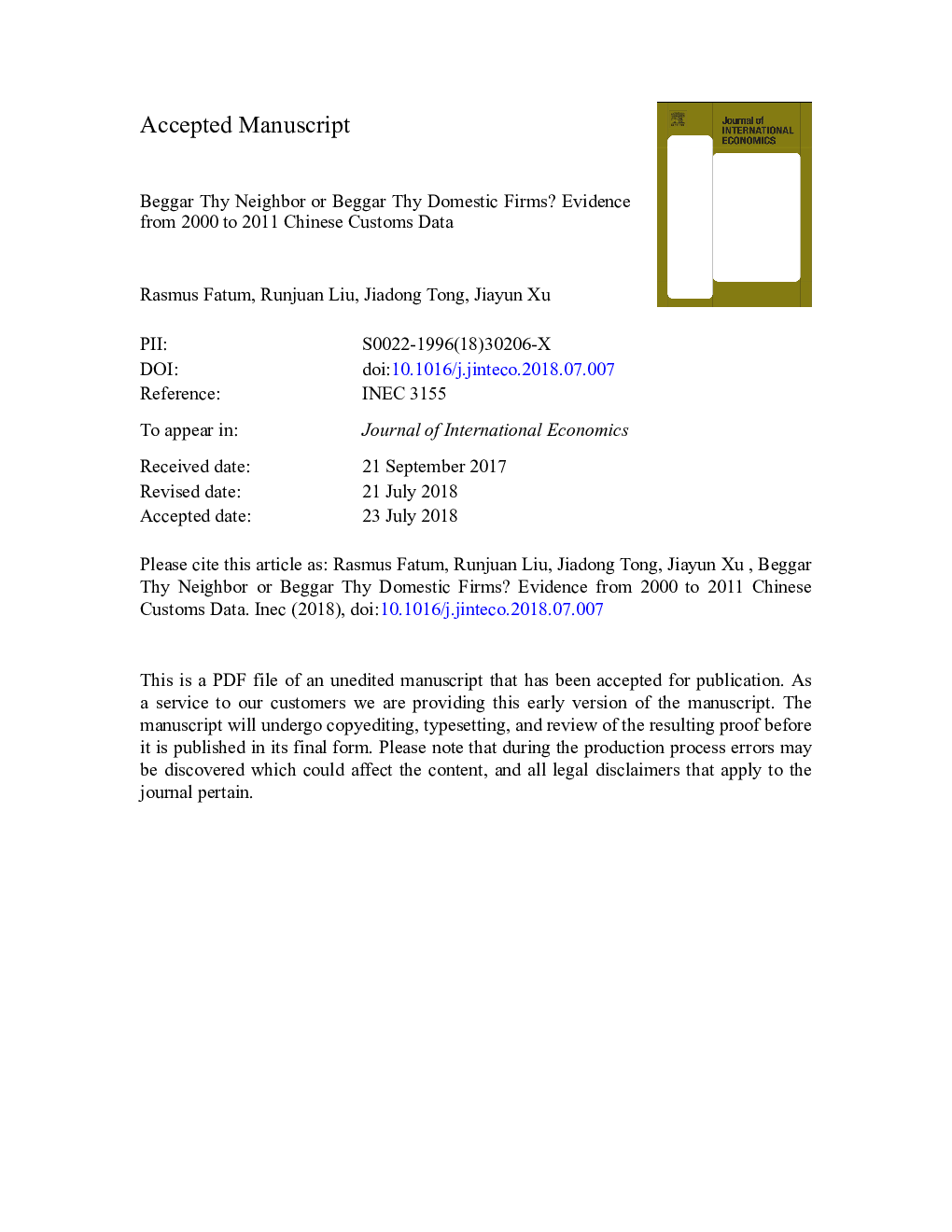| Article ID | Journal | Published Year | Pages | File Type |
|---|---|---|---|---|
| 8954587 | Journal of International Economics | 2018 | 49 Pages |
Abstract
A premise of beggar-thy-neighbor policies is that currency depreciations lead to export growth. This premise, however, does not seem validated as there is no consensus in the empirical literature regarding the impact of exchange rate changes on trade flows. We reexamine whether currency fluctuations are systematically associated with trade flows using a rich and unique Chinese customs dataset spanning the universe of bilateral Chinese transaction level trades over the 2000 to 2011 period. This dataset allows us to consider firm-level involvement in processing trade and firm-level dynamics in both export and import markets. Key findings of our firm-level estimations of trade elasticities include that the response of Chinese firms to exchanges rate changes depends strongly on the extent to which firms are involved in processing trade, i.e. heterogeneity in the extent of processing trade is crucial to understanding trade elasticities, and that the Chinese trade balance responds strongly to changes in the relative value of the Chinese Yuan, thereby implying that the influence of exchange rates on trade flows is significant and that currency depreciations do in fact lead to export growth and trade balance improvement.
Related Topics
Social Sciences and Humanities
Economics, Econometrics and Finance
Economics and Econometrics
Authors
Rasmus Fatum, Runjuan Liu, Jiadong Tong, Jiayun Xu,
